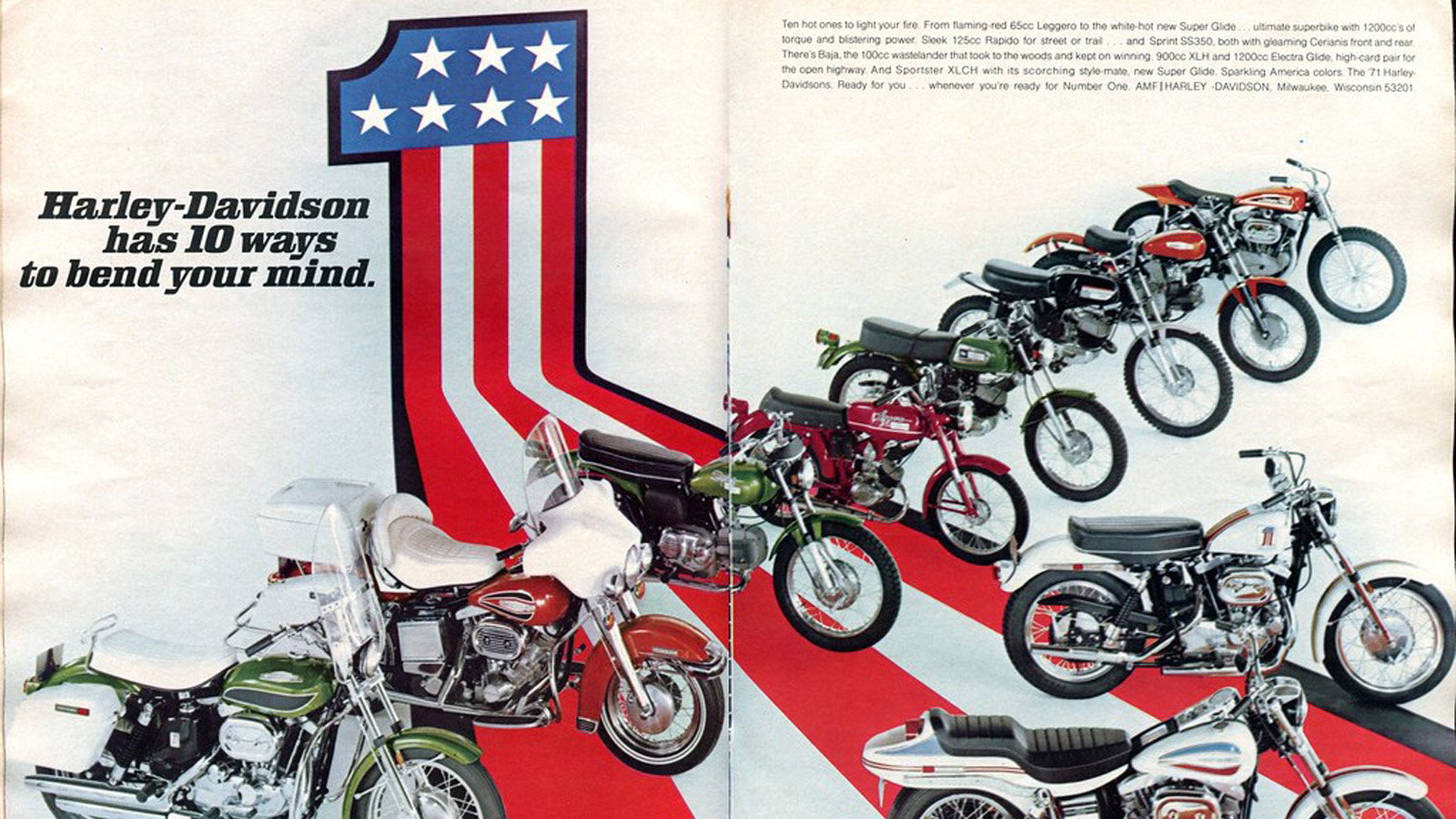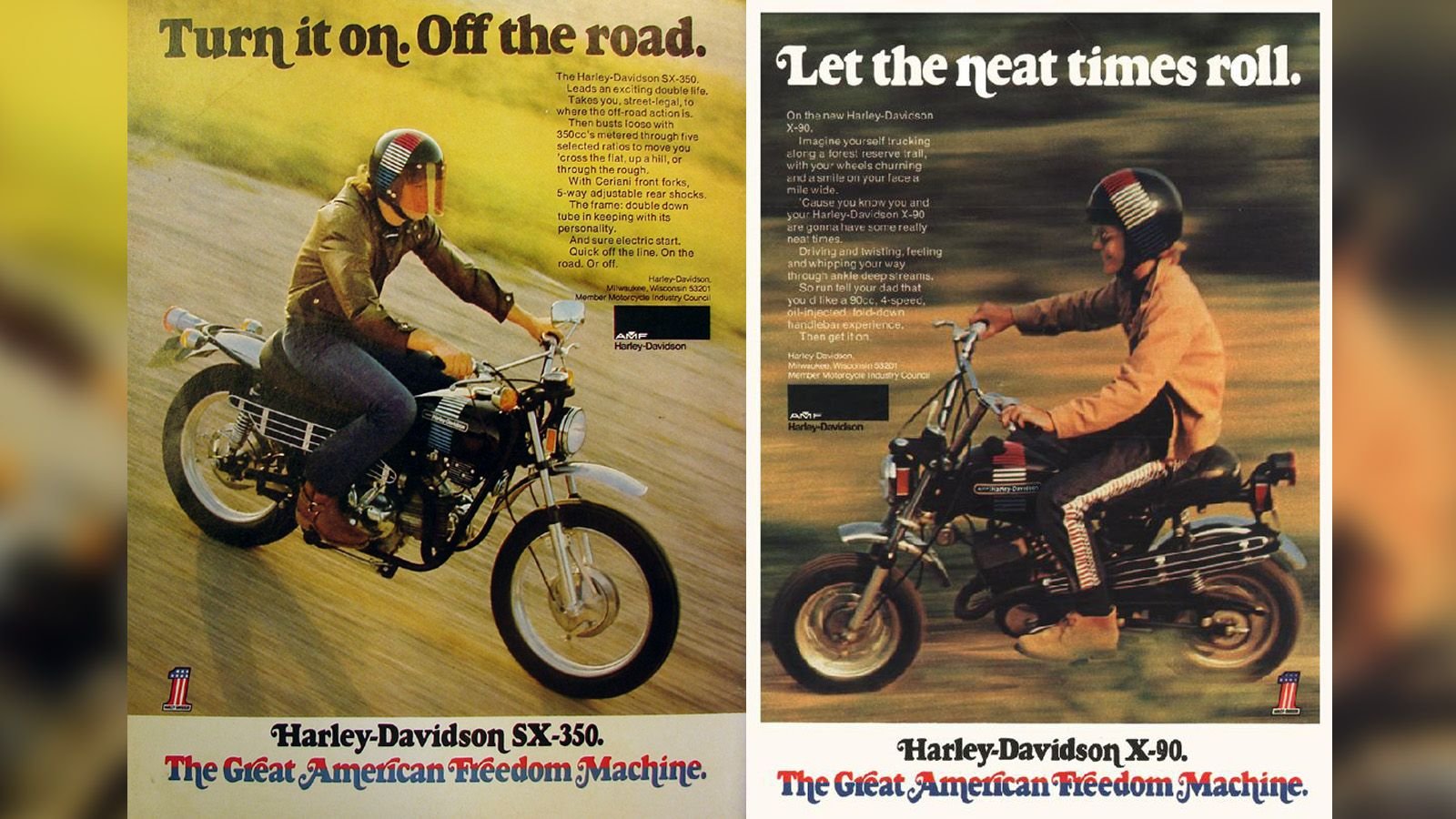The Motor Company's American Machine and Foundry Years
The AMF years were a challenging time in Harley-Davidson's history.
















Soliciting Offers
The AMF-era was a tough time in Harley-Davidson’s history, but also one of change. In the mid-1960s, the Motor Company's financial picture looked rather bleak. With declining profits and facing bankruptcy, the MoCo sadly began soliciting buyout offers. One materialized and in January of 1969, Harley-Davidson was sold for $22 million to the American Machine and Foundry — a manufacturer of bowling equipment and recreational items.
Contentious Conglomerate
However, AMF was not the only interested party in MoCo. Throughout 1968, Bangor Punta, a pleasure craft, firearms, and aviation conglomerate, attempted to purchase Harley. Citing an inadequate offer, Harley-Davidson's Board of Directors were adamant that they would not sell to Bangor Punta. It was a contentious period that dragged on and on with Bangor Punta eventually filing a lawsuit against the AMF and Harley Davidson.
>>Join the conversation about AMF and the "dark years" right here in the Harley-Davidson Forum!
Production Goals
The quality of motorcycles deteriorated during the AMF years with many loyalists wondering what had become of the brand. After the buyout, AMF Chairman Rodney Gott stated that the production would not stop. On the contrary, production was increased. The Harley-Davidson archives addressed this era candidly, “It was a challenging time. AMF drove a high-volume production strategy that was out of step with demand. Production goals were not matched by upgrades to manufacturing, and motorcycle quality dropped.” This was a matter clearly of quantity over quality.
>>Join the conversation about AMF and the "dark years" right here in the Harley-Davidson Forum!
Popular Variations
Sometimes referred to as the 'dark' years, the AMF-era was also a time of innovation and change. At the core, the AMF kept Harley-Davidson alive, despite fierce competition from the foreign manufacturers. The first glimmer of hope came in 1971, with the introduction of the FX Super Glide. Although sales were sluggish at first, the hybrid Big Twin/Sportster and its subsequent variations proved to be popular.
Photos courtesy of Mecum Auctions.
>>Join the conversation about AMF and the "dark years" right here in the Harley-Davidson Forum!
Small Displacement
Harley-Davidson had been producing smaller bikes since the 1960s. The re-branded Italian-made Aermacchi was produced under AMF guidance until 1978 when the division was sold to Cagiva. The 1970s also saw a host of other small-displacement bikes, such as the Baja and Rapido models, which were produced until 1972. The 250cc Sprint, produced throughout the 1960s, was also reintroduced as the SX-350 in 1971.
>>Join the conversation about AMF and the "dark years" right here in the Harley-Davidson Forum!
Labor Relations
As the 1970s rolled forward, things were looking up for Harley-Davidson. Four short years after facing financial disaster, the Motor Company opened the York, Pennsylvania assembly plant in 1973. With little experience in running a motorcycle factory, AMF initiated a process of administrative direction called 'scientific management.' It was disastrous, and labor relations deteriorated to the point where workers went on strike in 1974.
>>Join the conversation about AMF and the "dark years" right here in the Harley-Davidson Forum!
Accelerated Production
The AMF was forced to settle with the unions and decided to re-think its approach. Throughout the late-1970s, Willie G. Davidson worked his styling magic on the venerable Shovelhead platform. He produced a string of hits that include the 1977 FXS Low Rider, the 1980 FXDB Sturgis, and the Wide glide. Despite a downturn in motorcycle sales, AMF still insisted on accelerated production, and quality control issues persisted.
>>Join the conversation about AMF and the "dark years" right here in the Harley-Davidson Forum!
Enviable Position
After twelve years of AMF ownership, Harley-Davidson was sold to its managers in June of 1981. The Milwaukee Journal Sentinel condemned AMF in a 2018 article, “If there's a villain in the legend of Harley-Davidson, it's AMF.” Yet, it was a relationship of necessity. An often overlooked AMF-era fact is that despite everything, the Motor Company maintained its rank as the top-seller of heavyweight cruisers — a position it enjoys to this day.
>>Join the conversation about AMF and the "dark years" right here in the Harley-Davidson Forum!
For help with DIY service of your bike, check out the how-to section of HDForums.com

